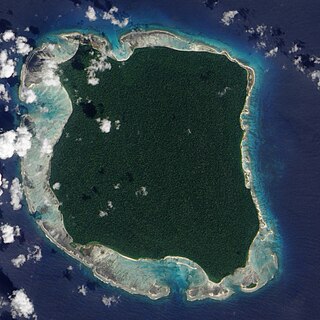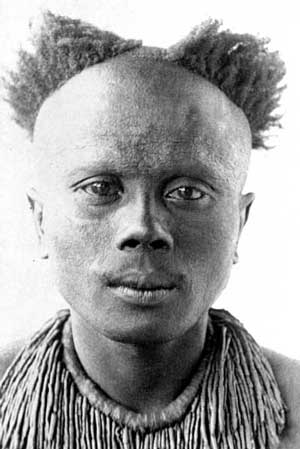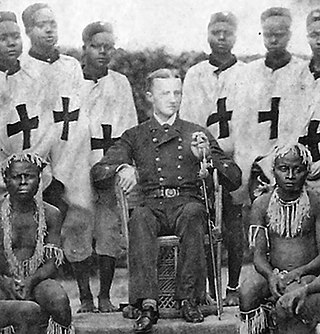
The Andaman Islands are an archipelago in the northeastern Indian Ocean about 130 km (81 mi) southwest off the coasts of Myanmar's Ayeyarwady Region. Together with the Nicobar Islands to their south, the Andamans serve as a maritime boundary between the Bay of Bengal to the west and the Andaman Sea to the east. Most of the islands are part of the Andaman and Nicobar Islands, a Union Territory of India, while the Coco Islands and Preparis Island are part of the Yangon Region of Myanmar.

The Andaman and Nicobar Islands is a union territory of India consisting of 571 islands, of which 37 are inhabited, at the junction of the Bay of Bengal and the Andaman Sea. The territory is about 150 km (93 mi) north of Aceh in Indonesia and separated from Thailand and Myanmar by the Andaman Sea. It comprises two island groups, the Andaman Islands (partly) and the Nicobar Islands, separated by the 150 km wide Ten Degree Channel, with the Andaman islands to the north of this latitude, and the Nicobar islands to the south. The Andaman Sea lies to the east and the Bay of Bengal to the west. The island chains are thought to be a submerged extension of the Arakan Mountains.

The Andamanese languages are a pair of language families spoken by the Andamanese peoples of the Andaman Islands in the Indian Ocean. The two language families are Great Andamanese and Ongan, while the Sentinelese language is spoken by an uncontacted people and therefore at present unclassifiable.

According to official estimates in India, 10,749 people were killed, 5,640 people were missing and thousands of people became homeless when a tsunami triggered by the 2004 Indian Ocean earthquake near the Indonesian island of Sumatra struck the southern coast on 26 December 2004. The earthquake registered 9.1–9.3 Mw and was the largest in five decades. It was followed by strong aftershocks on the Andaman and Nicobar Islands. The death toll of the earthquake was 1,500 people.

North Sentinel Island is one of the Andaman Islands, an Indian archipelago in the Bay of Bengal which also includes South Sentinel Island. It is home to the Sentinelese, an indigenous people in voluntary isolation who have defended, often by force, their protected isolation from the outside world.

The Sentinelese, also known as the Sentineli and the North Sentinel Islanders, are an indigenous people who inhabit North Sentinel Island in the Bay of Bengal in the northeastern Indian Ocean. Designated a particularly vulnerable tribal group and a Scheduled Tribe, they belong to the broader class of Andamanese peoples.

The Andamanese are the indigenous peoples of the Andaman Islands, part of India's Andaman and Nicobar Islands union territory in the southeastern part of the Bay of Bengal in Southeast Asia. The Andamanese peoples are among the various groups considered Negrito, owing to their dark skin and diminutive stature. All Andamanese traditionally lived a hunter-gatherer lifestyle, and appear to have lived in substantial isolation for thousands of years. It is suggested that the Andamanese settled in the Andaman Islands around the latest glacial maximum, around 26,000 years ago.
South Sentinel Island is one of the Andaman Islands in the Bay of Bengal. It is 1.6 km (1 mi) long northeast to southwest and up to 1 km wide. At only 1.61 km2, it is much smaller than its counterpart North Sentinel Island and is currently uninhabited. The island belongs to the Port Blair tehsil in the South Andaman administrative district, part of the Indian union territory of Andaman and Nicobar Islands, neighbouring North Sentinel Island.

The Andaman and Nicobar Islands are part of India. Folk traditions of the area include that of the Moken sea-farers and various kinds of ritual tribal dance.Andaman and nicobar is a group of island I the Asian country INDIA

The Great Andamanese are an indigenous people of the Great Andaman archipelago in the Andaman Islands. Historically, the Great Andamanese lived throughout the archipelago, and were divided into ten major tribes. Their distinct but closely related languages comprised the Great Andamanese languages, one of the two identified Andamanese language families.

The Onge are an Andamanese ethnic group, indigenous to the Andaman Islands in Southeast Asia at the Bay of Bengal, currently administered by India. They are traditionally hunter-gatherers and fishers, but also practice plant cultivation. They are designated as a Scheduled Tribe of India.

The Sixth Schedule of the Constitution of India allows for the formation of autonomous administrative divisions which have been given autonomy within their respective states. Most of these autonomous district councils are located in North East India with the exception of two in Ladakh and one in West Bengal. Presently, 10 Autonomous Councils in Assam, Meghalaya, Mizoram and Tripura are formed by virtue of the Sixth Schedule with the rest being formed as a result of other legislation.

Sentinelese is the undescribed language of the Sentinelese people of North Sentinel Island in the Andaman and Nicobar Islands, India. Due to the lack of contact between the Sentinelese people and the rest of the world, essentially nothing is known of their language or its vitality. The Sentinelese people do not allow outsiders onto the island and are generally hostile towards visitors. Friendly interactions have been rare.
The Jarawas are an indigenous people of the Andaman Islands in India. They live in parts of South Andaman and Middle Andaman Islands, and their present numbers are estimated at between 250–400 individuals. They have largely shunned interaction with outsiders, and many particulars of their society, culture and traditions are poorly understood. Since the 1990s, contacts between Jarawa groups and outsiders grew increasingly frequent. By the 2000s, some Jarawas had become regular visitors at settlements, where they trade, interact with tourists, get medical aid, and even send their children to school.

Ongan, also called Angan, South Andamanese or Jarawa–Onge, is a phylum which comprises two attested Southern-Andamanese languages spoken in the southern Andaman Islands.

Järawa or Jarwa is one of the Ongan languages. It is spoken by the Jarawa people inhabiting the interior and south central Rutland Island, central interior, and south interior South Andaman Island, and the west coast of Middle Andaman Island.

Maurice Vidal Portman was a British naval officer, who is best known for documenting several Andamanese tribes between 1879 and 1901 when he was posted as a superintendent of the Andaman Island Penal Colony.
The Battle of Aberdeen, on the Andaman Islands of India close to Port Blair, was an armed conflict that occurred on 14 May 1859 between the natives of the Andaman islands, the forces of the British colonial government in India, and to some extent the convicts of the Ross Island Penal Colony.
Madhumala Chattopadhyay is an Indian anthropologist who specializes in the Indigenous peoples of the Andaman and Nicobar Islands. In 1991, Chattopadhyay and her colleagues were the first outsiders to make peaceful contact with the Sentinelese people.

John Allen Chau was an American evangelical Christian missionary who was killed by the Sentinelese, an indigenous people in voluntary isolation, after he illegally traveled to North Sentinel Island, India, in an attempt to share information about Christianity with the tribe.













